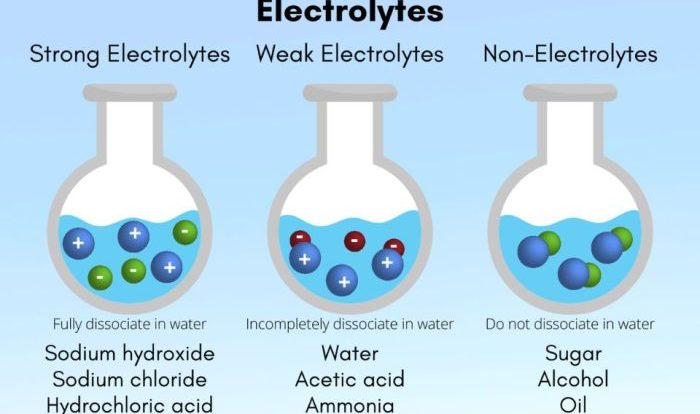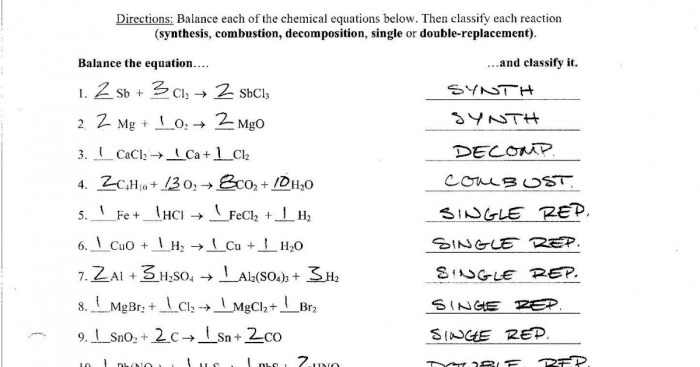What products would be obtained from the following hydrolysis reactions? This question opens the door to an exploration of hydrolysis reactions, their products, and their significance. From organic compounds to inorganic compounds, acids to bases, salts, and more, this article delves into the fascinating world of hydrolysis reactions, uncovering the diverse range of products they yield.
Hydrolysis reactions, the chemical breakdown of a compound with the addition of water, play a crucial role in various fields, including industrial processes and biological systems. Understanding the products of hydrolysis reactions is essential for comprehending their applications and implications.
Introduction

Hydrolysis reactions are chemical reactions that involve the breaking of a bond between two molecules by the addition of water. These reactions are crucial in various scientific fields and have significant implications in both organic and inorganic chemistry.
Analyzing hydrolysis reactions allows us to understand the mechanisms by which molecules interact with water, leading to the formation of new substances. By studying these reactions, we can gain insights into the chemical properties of compounds and predict their behavior in different environments.
Products of Hydrolysis Reactions: What Products Would Be Obtained From The Following Hydrolysis Reactions
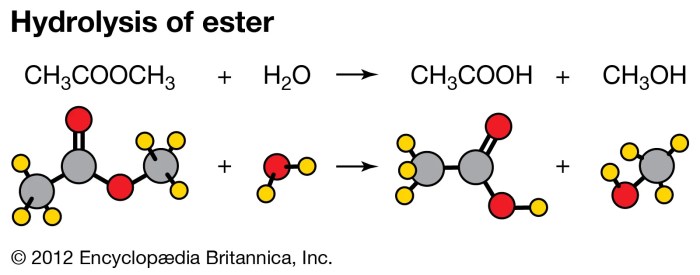
Organic Compounds
Hydrolysis of organic compounds can result in the formation of a variety of products, including:
- Alcohols:Hydrolysis of esters, amides, and other organic compounds containing ester or amide bonds can produce alcohols.
- Carboxylic acids:Hydrolysis of esters, amides, and other organic compounds containing ester or amide bonds can also produce carboxylic acids.
- Amines:Hydrolysis of amides and other organic compounds containing amide bonds can produce amines.
Inorganic Compounds
Acids
Hydrolysis of certain inorganic compounds, such as metal halides and non-metal oxides, can lead to the formation of acids:
- Hydrochloric acid (HCl):Hydrolysis of hydrogen chloride gas (HCl) in water produces hydrochloric acid.
- Sulfuric acid (H2SO 4): Hydrolysis of sulfur trioxide (SO 3) in water produces sulfuric acid.
Bases
Hydrolysis of certain inorganic compounds, such as metal oxides and hydroxides, can result in the formation of bases:
- Sodium hydroxide (NaOH):Hydrolysis of sodium oxide (Na 2O) in water produces sodium hydroxide.
- Calcium hydroxide (Ca(OH)2): Hydrolysis of calcium oxide (CaO) in water produces calcium hydroxide.
Salts
Hydrolysis of certain inorganic compounds, such as metal salts, can produce salts with different properties:
- Sodium acetate (CH3COONa): Hydrolysis of ethyl acetate (CH 3COOCH 2CH 3) in water produces sodium acetate.
- Ammonium chloride (NH4Cl): Hydrolysis of ammonium carbonate ((NH 4) 2CO 3) in water produces ammonium chloride.
Factors Affecting Hydrolysis Reactions
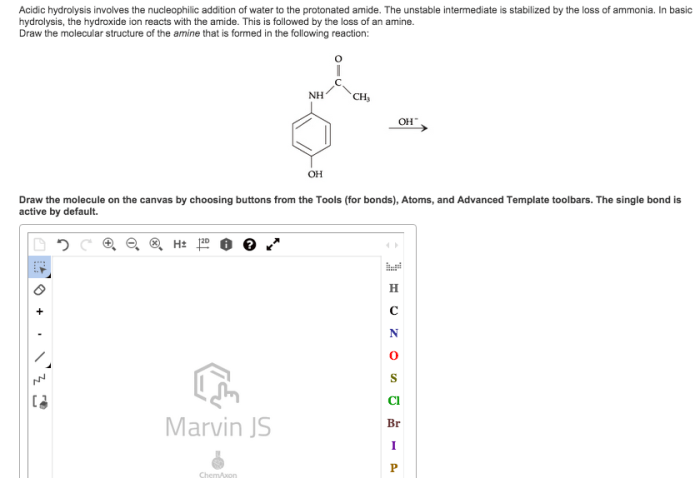
Temperature, What products would be obtained from the following hydrolysis reactions
Temperature significantly influences the rate and extent of hydrolysis reactions. In general, higher temperatures increase the kinetic energy of molecules, leading to a faster reaction rate. However, some hydrolysis reactions may exhibit optimal temperatures at which the reaction proceeds most efficiently.
pH
The pH of the solution can affect the products and reaction pathways of hydrolysis reactions. For example, in the hydrolysis of esters, acidic conditions favor the formation of carboxylic acids, while basic conditions favor the formation of alcohols.
Concentration
The concentration of reactants and products can influence the rate and equilibrium of hydrolysis reactions. Higher concentrations of reactants generally lead to faster reaction rates, while higher concentrations of products can shift the equilibrium towards the reactants.
Applications of Hydrolysis Reactions
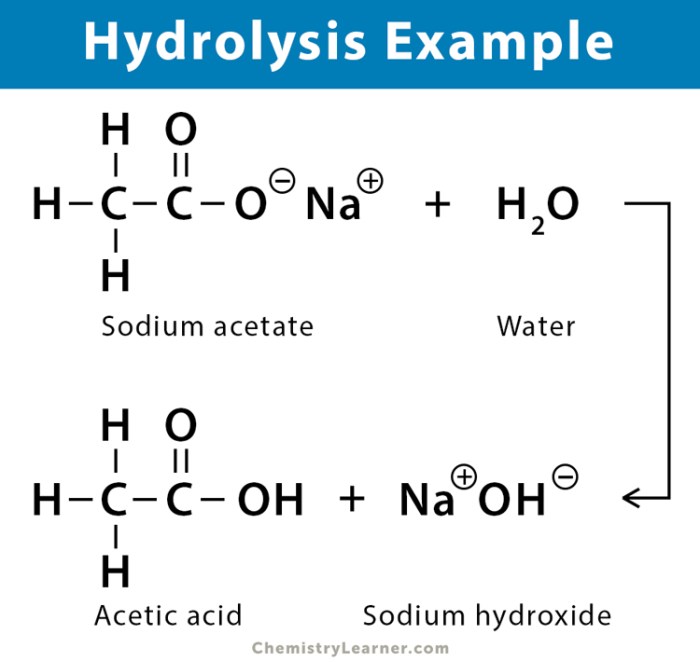
Industrial Processes
Hydrolysis reactions are widely used in various industrial processes, including:
- Soap making:Hydrolysis of fats and oils with sodium hydroxide or potassium hydroxide produces soap and glycerol.
- Food processing:Hydrolysis of starch in grains and potatoes is used to produce glucose and other sugars.
Biological Systems
Hydrolysis reactions play crucial roles in biological systems, such as:
- Digestion:Enzymes in the digestive system hydrolyze complex carbohydrates, proteins, and fats into smaller molecules that can be absorbed by the body.
- Metabolism:Hydrolysis reactions are involved in the breakdown of glucose and other nutrients to release energy for cellular processes.
Query Resolution
What are the common organic compounds obtained from hydrolysis reactions?
Alcohols, carboxylic acids, and esters are among the common organic compounds obtained from hydrolysis reactions.
How do hydrolysis reactions contribute to biological systems?
Hydrolysis reactions play a vital role in biological systems, such as digestion, metabolism, and energy production.
What factors influence the rate of hydrolysis reactions?
Temperature, pH, and concentration are key factors that influence the rate of hydrolysis reactions.
